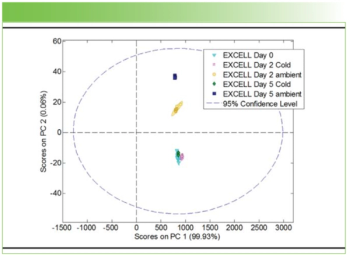
Extended Uniformity of Dosage Unit Testing of Pharmaceutical Tablets, Using Transmission Raman Spectroscopy
Webinar Date/Time: Europe: Tuesday, 28 March, 2023 at 1pm BST | 2pm CET North America: Tuesday, 28 March, 2023 at 11am PDT | 1pm CDT | 2pm EDT Asia: Wednesday, 29 March, 2023 at 10:30am IST | 1pm SGT | 2 pm JST | 4pm AEDT
The increased sampling volume minimizes sub-sampling and makes the technique ideal for the assessment of assay, uniformity of dosage unit, and polymorphs in tablets and capsules. Due to its non-destructiveness and high sample throughput, transmission Raman spectroscopy can be applied to extended uniformity of dosage unit testing and enhanced control strategies aiming at real-time release for batch and continuous operations.
Register Free:
Event Overview:
In this webinar, Anders Sparén, Associate Principal Scientist at Astra Zeneca, will present work utilizing Transmission Raman spectroscopy (TRS).
The increased sampling volume minimizes sub-sampling and makes the technique ideal for the assessment of assay, uniformity of dosage unit, and polymorphs in tablets and capsules. Due to its non-destructiveness and high sample throughput, transmission Raman spectroscopy can be applied to extended uniformity of dosage unit testing and enhanced control strategies aiming at real-time release for batch and continuous operations.
Key Learning Objectives:
- Learn how Astra Zeneca utilizes transmission Raman analytical workflows in PAT
- Learn different approaches how to interpret and evaluate the spectral data
- Find out more about the features and benefits of transmission Raman towards an enhanced control strategy
- Find out how rapid, nondestructive technology can benefit your lab
Who Should Attend:
- Pharmaceutical scientists specializing in solid oral dose formulations and manufacturing
- Lab managers with interest in tools to improve analytical workflows and operational efficiencies
- Spectroscopists and process analytical technology (PAT) scientists interested in vibrational spectroscopy
Speaker:
Anders Sparén
Associate Principal Scientist
AstraZeneca Gothenburg, Swede
Anders Sparén is an associate principal scientist in chemical/formulation characterization with vibrational spectroscopy at AstraZeneca Gothenburg, Sweden. He joined the company in 1995 and has mainly been working with vibrational spectroscopy, process analytical technology, the design of experiments, multivariate analysis, analytical method development, and data management. His current focus is on PAT for continuous manufacturing. He has an MSc in chemical engineering and a Ph.D. in analytical chemistry, both from the Royal Institute of Technology in Stockholm, Sweden.
Register Free:
Newsletter
Get essential updates on the latest spectroscopy technologies, regulatory standards, and best practices—subscribe today to Spectroscopy.




